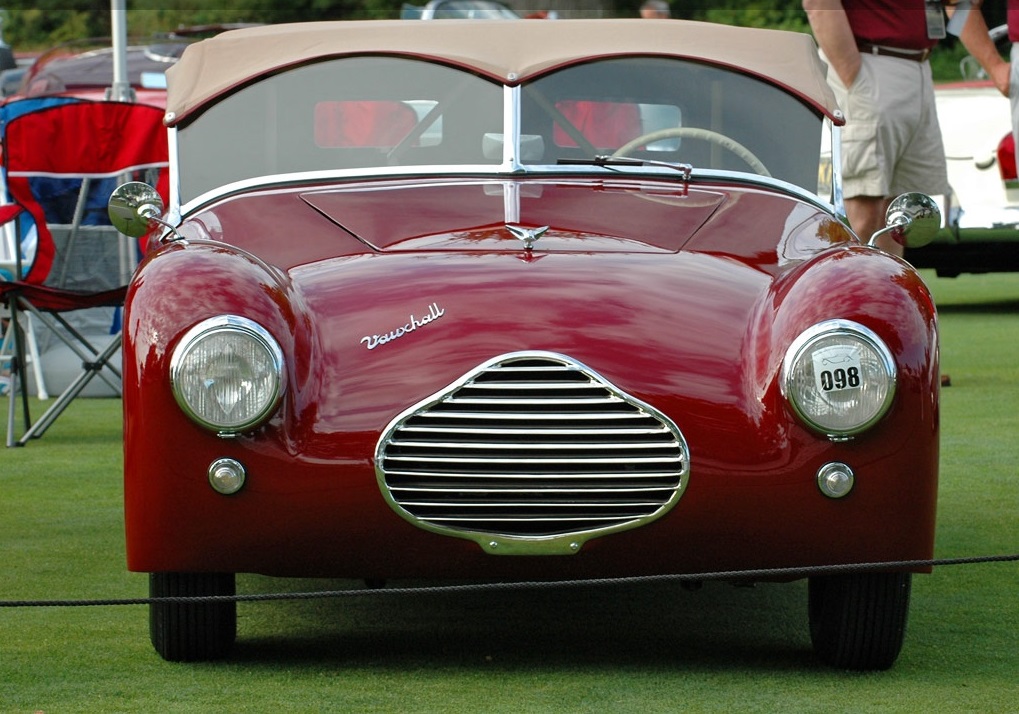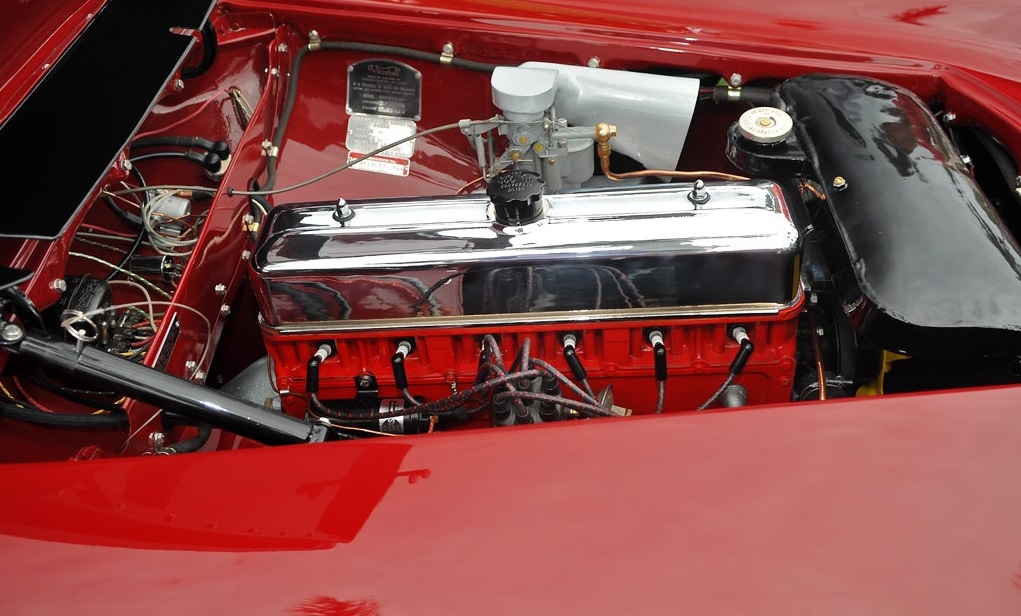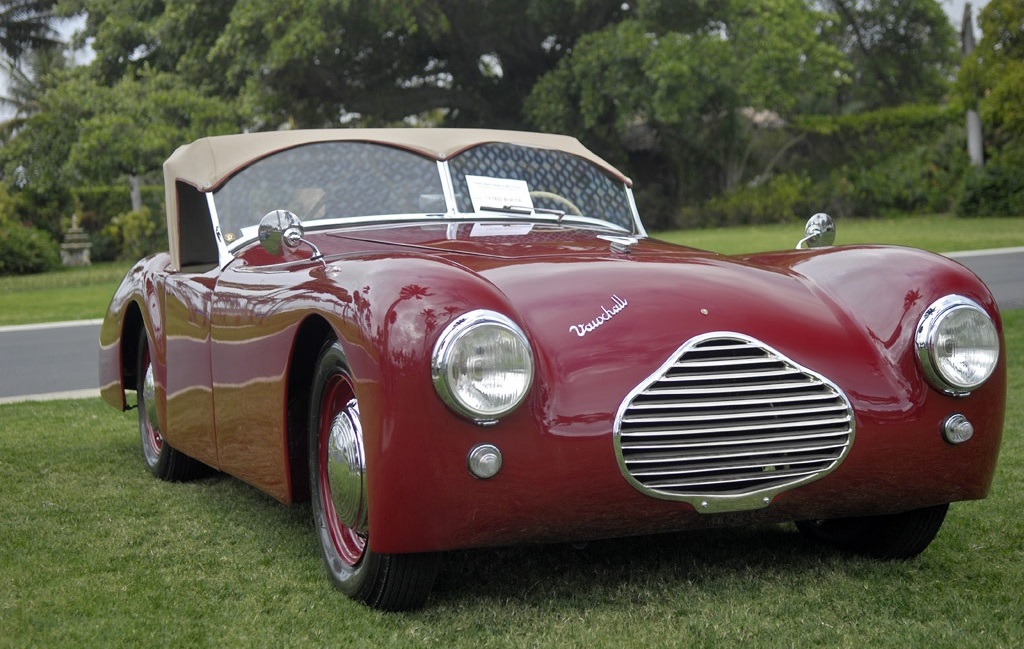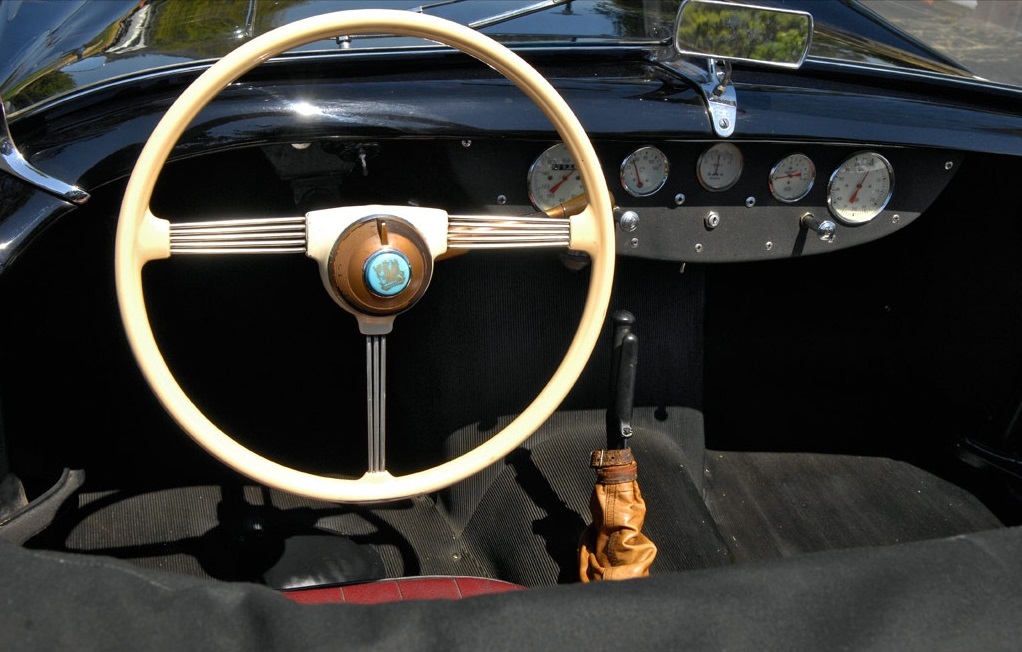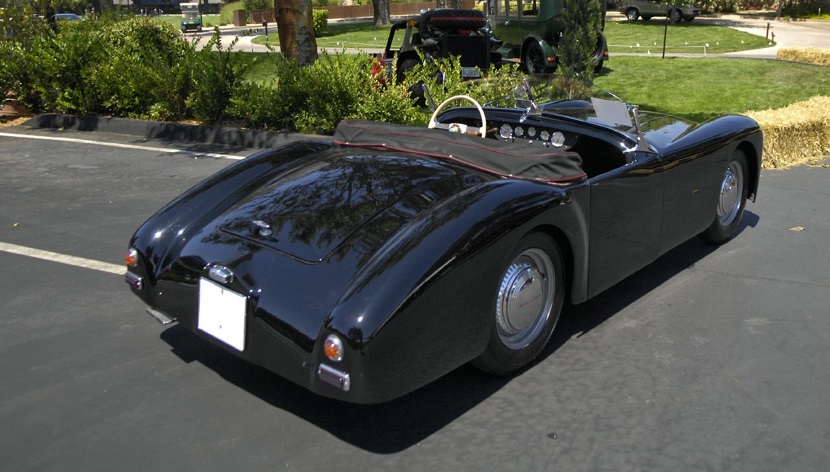 Engine
Engine: 1970cc, 4-cylinder, dual S.U. Carburetors
Transmission: 4-speed Cotal semi-automatic
Chassis: Patented rectangular tube frame with aluminum body panels
Suspension Front: Independent with short trailing links and coil springs, Gordon Armstrong hydraulic shock-absorbers
Suspension Rear: semi-elliptical springs, Gordon Armstrong hydraulic shock-absorbers
Brakes: Lockheed 12" drums
Wheelbase: 102"
Track: 50"
Weight: 2,688 lbs

The
Atom was designed by Claude Hill and built in 1939. Its tubular frame
was quite advanced for its time.

David Brown drove the car in 1946 and
many say it was instrumental in his decision to buy the company.

Most of us would be extremely lucky to own an
Aston Martin someday, but only one person will be lucky enough to own this gorgeous Aston prototype when it crosses the block at
Goodwood this summer.
This is the
1939/40 Aston Martin Atom
prototype. Only one exists, it survived the war, and my goodness it’s
beautiful. While not the first concept car ever produced, it was one of
the earliest (following Buick’s Y-Job by only a year and a half). Aston
Martin’s owner,
Gordon Sutherland, conceived of the Atom to be the smallest, lightest saloon possible at that time.
Yes,
you heard right, a four-door saloon. And to deliver on those high
hopes, some seriously cutting-edge technology was integrated. The Atom
featured a tubular space frame chassis, lightweight aluminum body,
coil-sprung independent front suspension, a semi-automatic shift
gearbox, and the
first DB1 2.0L engine.
It was driven by Sutherland during World War II, and has
clocked an amazing 250,000 miles.
As far as 75-year-old cars go, that’s unbelievable. This gem represents
a truly sparse era of automotive production; we hope it finds a good
home on June 27 at the Goodwood Festival of Speed auction.
Landmark 1939-1940 prototype Aston Martin Atom offered for sale by auction for the first time ever
The unique, 75-year-old Aston Martin Atom is to be a star Lot in Bonhams' Goodwood Festival of Speed Sale on June 27, 2014.
This
avant-garde, lightweight and highly original aerodynamic Coupe concept
car has been both renowned and revered for decades by Aston Martin
collectors and the wider world of confirmed classic car enthusiasts. But
while it is less well-known to the public at large, this 1939-1940
one-off prototype from the legendary British marque is in fact a hugely
significant and influential landmark within motoring history.
The frontier-technology Aston Martin Atom – surviving as one of the world's earliest fully running concept cars - featured:
-A fully-patented, lightweight yet rigid integral body and tubular spaceframe chassis structure
-Lightweight aluminum body paneling, permitting speedy design changes
-Patented parallel-linkage coil-sprung independent front suspension
-The first UK use of the later almost universal Salisbury back axle
-Cotal electromagnetic semi-automatic gearbox – forerunner of modern 'paddle'
-Aerodynamic 'fastback' style Coupe coachwork
-Aeronautical-style 'hammock' seats
-In 1945 the first use of Aston Martin's newly patented 2-liter (DB1) engine
The
Atom was finished and registered only six weeks after the Dunkirk
evacuation in 1940. Aston Martin's contemporary owner, enthusiast
businessman Gordon Sutherland, had the car designed and built by a
dedicated design team under engineer Claude Hill. At that fraught time
when park railings, pots and pans were being melted-down to aid the War
effort, the Atom was amongst fewer than 750 private cars to be UK
registered in the entire year.
While the mighty American General
Motors Corporation's 1938 Buick Y-Job is widely accepted as having been
the first concept car of all, at the other end of the size spectrum the
then-tiny Aston Martin marque had the Atom in public road use during
1940.
Gordon Sutherland himself explained that "The whole point
of the Atom was to make the smallest, lightest, enclosed saloon
possible". It was intended to combine the performance, roadholding and
handling of the finest contemporary sports car with quietness and the
comfort of an aerodynamically efficient saloon body, easily modified and
economically produced.
The 'atom' being the smallest, most
powerful thing conceivable – the essence of everything – it was chosen
as the perfect name for this technically advanced, futuristic Grand
Touring car.
The Aston Martin Atom's wartime press reception was
ecstatic. 'The Autocar' described it as: "The future in the present...a
complete breakaway from existing Aston Martins and the general run of
British cars...The saloon body breaks with British car convention...see
it as the comfortable, convenient sports car of the future..."
'Motor
Sport' magazine enthused: "This is a machine which convinces you it is
all the way a winner...", while 'The Motor' was emphatic that "...in
this car we can see the new order of motoring...".
This unique
frontier-breaking 90-100mph 2-plus-2 Coupe was used by Mr and Mrs Gordon
Sutherland both for personal and private transport, their children
often traveling in its cozy rear seats.
Lack of publicly
available fuel during wartime saw the Atom stored at his factory for up
to three months at a time, but Gordon Sutherland knew its
technology-proving value for a postwar resumption of Aston Martin
production. He drove it personally for more than 100,000 test miles and
immediately postwar the experience of driving the Atom persuaded
industrialist David Brown to buy the company that had created it.
Amongst
the developments Gordon Sutherland listed for the time when materials
might again become available were many incorporated postwar into the
first of the David Brown-owned Aston Martin company's DB-series Grand
Touring cars, the now-renowned Aston Martin DB1, DB2, DB2/4 and 3.
Today
the Atom, taxed and tested, has completed some 250,000 miles. Its
discerning ownership - including two distinguished race/rally drivers -
has changed only once in the last 49 years, and this unsung little jewel
has long been painstakingly conserved and maintained by one enthusiast
owner. He has now entrusted it to Bonhams for the Goodwood Festival of
Speed Sale on June 27.
Bonhams holds the World record for the
highest price achieved for any Aston Martin sold at auction and Group
Motoring Director James Knight describes the Atom as: "Plainly one of
Aston Martin's absolute landmark designs, and certainly one of the most
exciting one-off British cars we have ever been asked to offer. It is
unique, it is super sophisticated, and when one considers it within the
context of 1939-40 it represents a monumental achievement. That the Atom
has survived in almost constant use, and is today so beautifully
conserved in highly original order, is a great tribute to the enthusiasm
and taste of the Aston Martin connoisseurs who have fostered it for so
many years.
"Placing a value on such an important and unique
motor car is nigh on impossible but it has all the right credentials: a
well respected and international marque; concours condition;
originality, provenance, useability, rarity and of course its historical
significance. Our initial thoughts are that it will realize many
hundreds of thousands and certainly has the potential to achieve more.
Time will tell though, and by offering Atom publicly at auction, we will
let the market determine the value."
Source: remarkablecars.com












